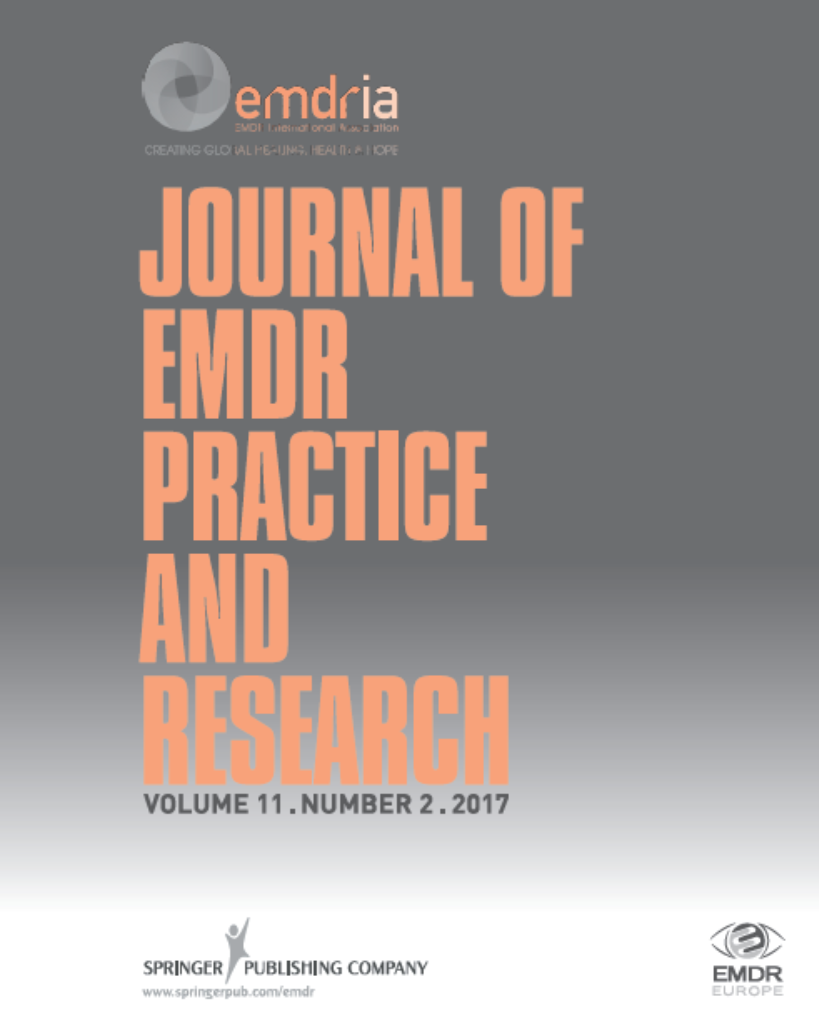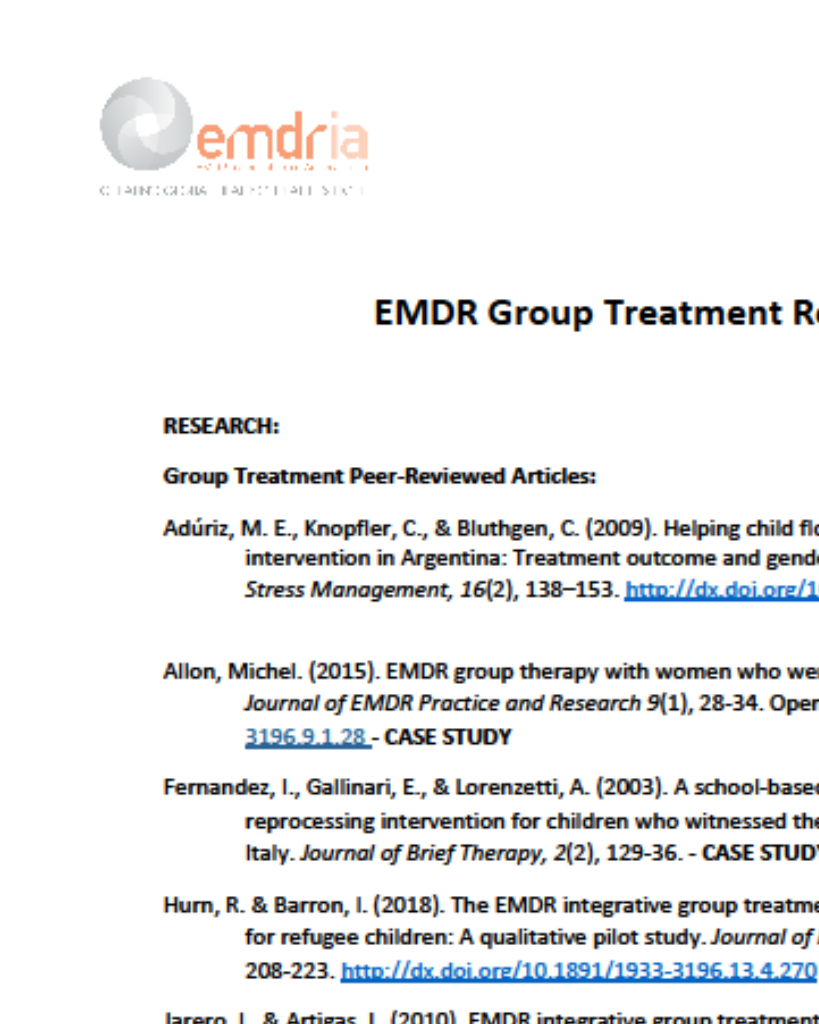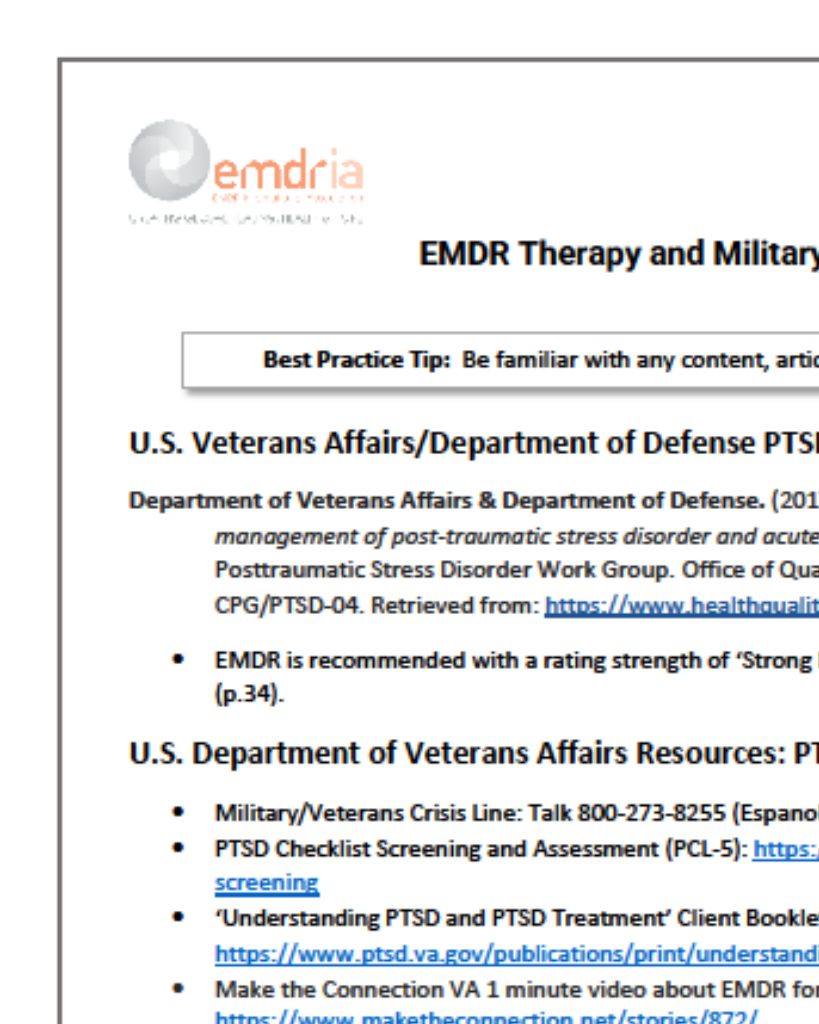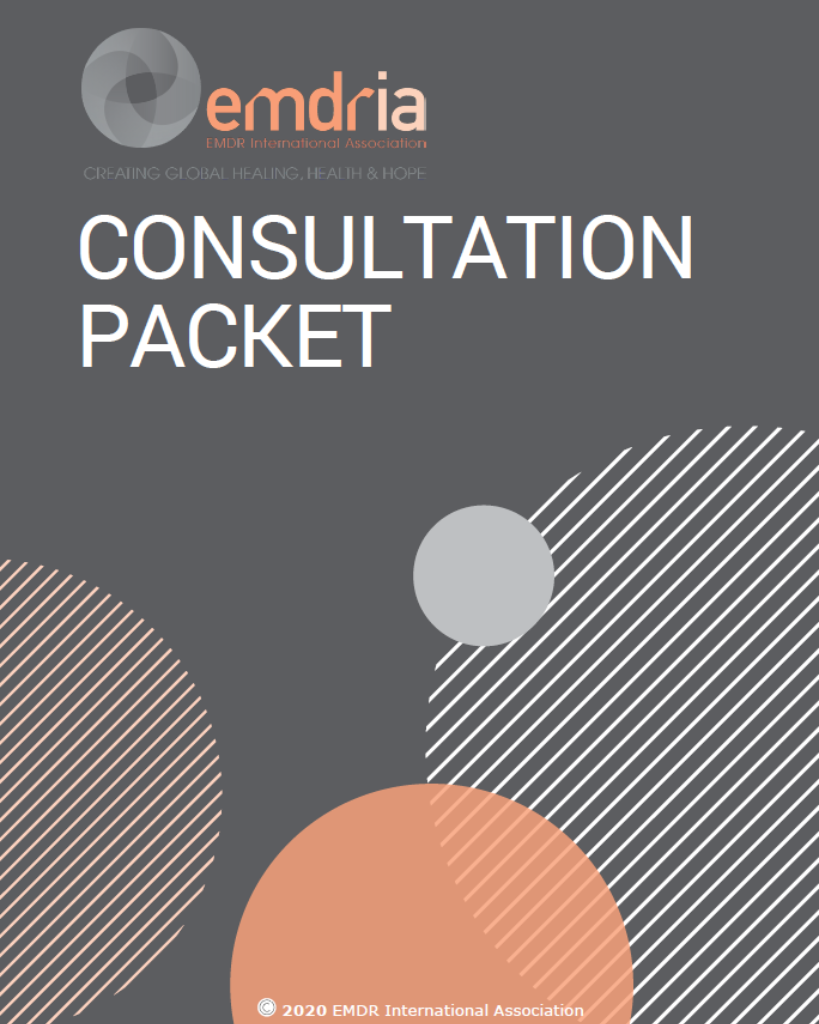Evaluating the EMDR Group Traumatic Episode Protocol With Refugees: A Field Study
EMDR therapy has been proven to be an effective treatment for acute and chronic traumatic stress symptoms with refugees.
Article Abstract
“In 2015, more than 1.5 million refugees arrived in Germany, many severely traumatized. Eye movement desensitization and reprocessing (EMDR) therapy has been proven to be an effective treatment for acute and chronic traumatic stress symptoms. A modification for provision in group settings was developed by E. Shapiro: the EMDR Group Traumatic Episode Protocol (G-TEP). In this field study, we investigated the effectiveness of 2 sessions of EMDR G-TEP in treating traumatized refugees. After receiving a psychoeducation session, 18 Arabic-speaking refugees from Syria and Iraq who had come to Germany during the previous 5 months were assigned to treatment and/or waitlist. The Impact of Event Scale-Revised (IES-R) and Beck Depression Inventory (BDI) were administered at pre- and posttreatment. Analysis was conducted using the Mann–Whitney U test and planned Kolmogorov–Smirnov tests. Results showed significant differences between the treatment and the waitlist groups, indicating a significant decline in IES-R scores (p < .05). Although differences in BDI scores did not reach significance (p = .06), a large decline in BDI scores was seen in the treatment group. These results provide preliminary evidence that it might be effective to treat groups of traumatized refugees with EMDR G-TEP.”
—Description from publisher
Article Access
Open Access
Lehnung, M., Shapiro, E., Schreiber, M., & Hofmann, A. (2017). Evaluating the EMDR Group Traumatic Episode Protocol With Refugees: A Field Study. Journal of EMDR Practice and Research, 11(3), 129–138. https://doi.org/10.1891/1933-3196.11.3.129
About the Journal
The Journal of EMDR Practice and Research is a peer-reviewed publication devoted to integrative, state-of-the-art papers about Eye Movement Desensitization and Reprocessing. It is a broadly conceived interdisciplinary journal that stimulates and communicates research and theory about EMDR, and their application to clinical practice. The Journal of EMDR Practice and Research is the Official Publication of the EMDR International Association.
Date
September 1, 2017
Creator(s)
Maria Lehnung, Elan Shapiro, Melanie Schreiber
Contributor(s)
Arne Hofmann
Client Population
Immigrants/Refugees
Practice & Methods
Group
Extent
8 pages
Publisher
Springer Publishing Company
Rights
Copyright © 2017 EMDR International Association
APA Citation
Lehnung, M., Shapiro, E., Schreiber, M., & Hofmann, A. (2017). Evaluating the EMDR Group Traumatic Episode Protocol With Refugees: A Field Study. Journal of EMDR Practice and Research, 11(3), 129–138. https://doi.org/10.1891/1933-3196.11.3.129
Series
11
Installment
3
Audience
EMDR Therapists
Language
English
Content Type
Article, Peer-Reviewed, RCT
Original Source
Journal of EMDR Practice and Research
Access Type
Open Access





